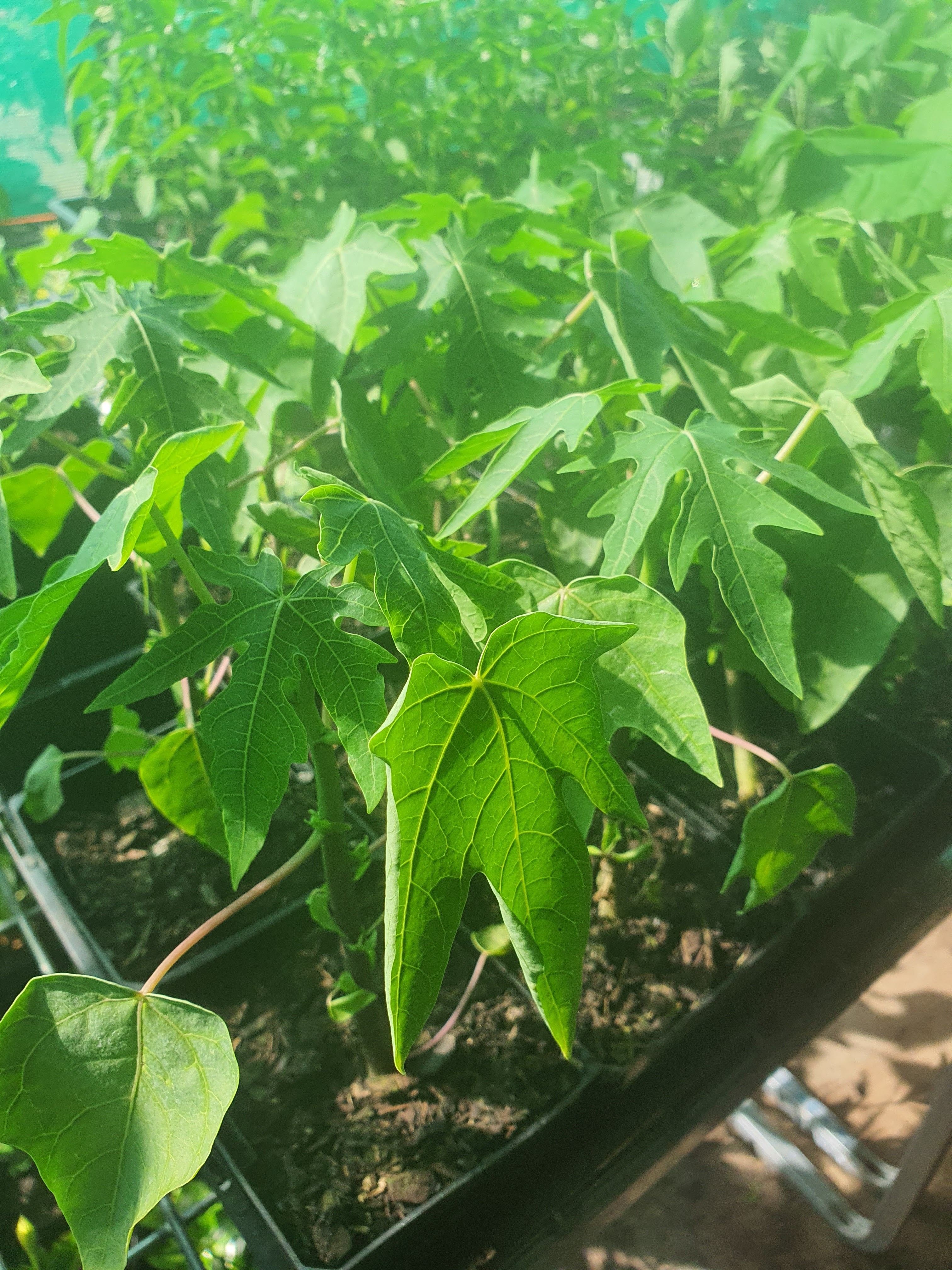Description
Papaya Plant for Home Garden
The papaya plant (Carica papaya) is a tropical, fast-growing plant known for its sweet, juicy fruit. It normally grows as a small tree with large, deeply lobed, green leaves and can reach heights of 4 to 10 feet. The plant produces oval, yellow-orange fruit when it matures, which is known for its soft, vibrant flesh and sweet flavour. The papaya fruit is rich in vitamins, enzymes, and antioxidants, making it a popular food item worldwide.
Growing Specifications:
- Height: Typically grows 4-10 feet tall, although it can grow taller in tropical climates.
- Spread: 2-6 feet in width.
- Leaves: Large, deeply lobed, dark green leaves.
- Flowers: The flowers are typically yellow or white and can be male, female, or hermaphrodite.
- Fruit: The fruit is usually pear-shaped and orange when ripe, with a sweet and slightly tangy taste.
- Lifespan: Papaya plants are usually short-lived, about 2-3 years in optimal conditions, but they can produce fruit within a year of planting.
Suitable Garden:
Papaya plants thrive in warm, sunny, and tropical or subtropical climates. They do well in:
- Tropical gardens where temperatures remain hot.
- Subtropical gardens with frost-free conditions.
- Well-drained soil with good organic content, preferably sandy loam or loamy soil.
- Greenhouses in cooler regions, as long as temperature control and light requirements are met.
Features and Benefits:
- Nutritional Value: Papaya is rich in Vitamin C, Vitamin A, folate, and fiber. It has the enzyme papain, which aids digestion.
- Easy to Grow: Requires minimal maintenance compared to many other fruit trees, making it a great choice for beginners.
- Quick Harvest: It produces fruit quickly , offering a fast return on investment.
- Health Benefits: Papaya has numerous health benefits, including improving digestion, boosting the immune system, and promoting healthy skin.
- Decorative: With its large leaves and tropical appearance, papaya plants make a great addition to a garden, adding an exotic feel.
- Low Maintenance: The papaya plant doesn't require much care, making it a convenient option for home gardeners.
Growing Requirements:
-
Temperature: Papaya plants need warm temperatures. They don’t tolerate frost well and should be protected from freezing temperatures.
-
Sunlight: Full sun is essential for optimal growth and fruit production. It needs at least 4-6 hours of direct sunlight each day.
-
Soil: The soil should be well-draining, rich in organic matter, and slightly acidic to neutral. Papayas don’t tolerate waterlogging, so good drainage is crucial.
-
Watering: Regular watering is necessary, especially during dry periods. However, over-watering should be avoided as it can lead to root rot.
-
Space: Ensure good spacing between plants for good air circulation and growth.
-
Fertilization: Papaya plants are heavy feeders. They benefit from balanced fertilizers rich in nitrogen, phosphorus, and potassium, especially during the growing and fruiting periods.
-
Pruning: Prune dead or damaged leaves and stems to maintain plant health and appearance. It's also essential to remove any suckers that may appear at the base.
-
Pollination: Papaya plants can be hermaphroditic (self-pollinating), male, or female. Hermaphroditic plants don’t need a second tree for pollination, but if you have a male and female, it can improve fruit yield.
Why Choose Papaya Plants:
- Fast Growth and Quick Fruit Production: Unlike many fruit trees that take several years to bear fruit, papayas can produce fruit within 1–2 years after planting.
- Low Maintenance: Papayas require less care compare many other fruit-bearing plants, making them perfect for novice gardeners or those with limited time.
- Space-Saving: They are compact and don’t require a lot of space, so they can be grown in smaller gardens, containers, or greenhouses.
- Health and Culinary Value: Papaya’s health benefits and versatility in the kitchen make them a popular choice.
- Aesthetics: The large, tropical leaves and fruit make it a visually striking plant in any garden, especially in tropical and subtropical climates.

